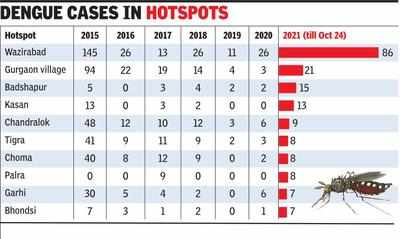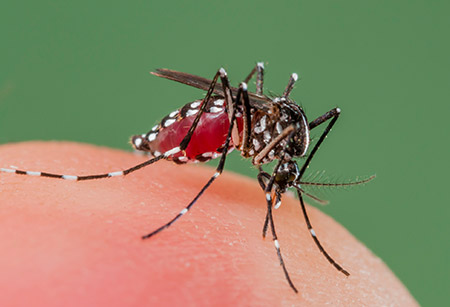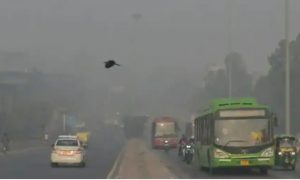
GURUGRAM: Wazirabad, with its series of condominiums, has accounted for over 40% of Gurugram’s dengue cases. Of the 212 cases reported in the district so far, Wazirabad has registered 86 this season.
But this is not the first time for Wazirabad. In the last seven years, the area has always had the most number of dengue cases. In 2015, as many as 145 cases were reported in Wazirabad. There were 26 cases in 2016,13 in 2017, 36 in 2018, 11 in 2019, 26 in 2020 and 86 so far this year. The health department this time has identified 18 dengue hotspots in the district. Apart from Wazirabad, some of the others are Gurugram village, Garhi, Daultabad, Pataudi, Bhondsi, Badshapur, Sohna and Tigra.
Officials said the large number of housing societies within close proximity of each other and the high density of population made Wazirabad prone to vector-borne diseases such as dengue and malaria. The health department has already started focused testing in the area. “Most of the new patients are in the age group of 16 to 45 years. They are from the highrises,” said Virender Yadav, the chief medical officer.
“We have been closely monitoring areas that have reported cases and have created a database. Focused testing of those showing symptoms is being carried out in all the hotspots. We have added 12 beds to the emergency ward of the hospital in Sector 10. We also have a 30-bed ward exclusively for dengue patents,” he added.
But it’s not just Wazirabad that is the cause for concern. Other areas that have a high rate of dengue cases this season include Gurugram village (10.2%), Badshapur (6.5%), Kasan (5.9%) and Chandralok (3.8%).
Fogging and anti-larvae drives are being carried out in these areas and the municipal corporation has also set up a control room for people to call and place requests. Officials said people can call on 1800-1801-817 daily between 9am and 5pm to request for fogging in their areas. Evening OPDs have also been started in government health facilities to detect cases at a faster rate. These OPDs are functioning from 3pm to 7pm daily.
Officials pointed out that the dengue numbers were particularly worrying this year because of the extended monsoon and incessant rainfall, which caused waterlogging in several pockets for days. Dengue-causing mosquitoes breed in freshwater and it takes a week for the larvae to hatch.
Gurugram city had the highest number of dengue cases in 2015, when a total of 451 patients were down with the disease. The number stood at 86 in 2016, 66 in 2017and 93 in 2018. In 2019, 22 cases of dengue were reported in the city and it rose to 51 in 2021.





































